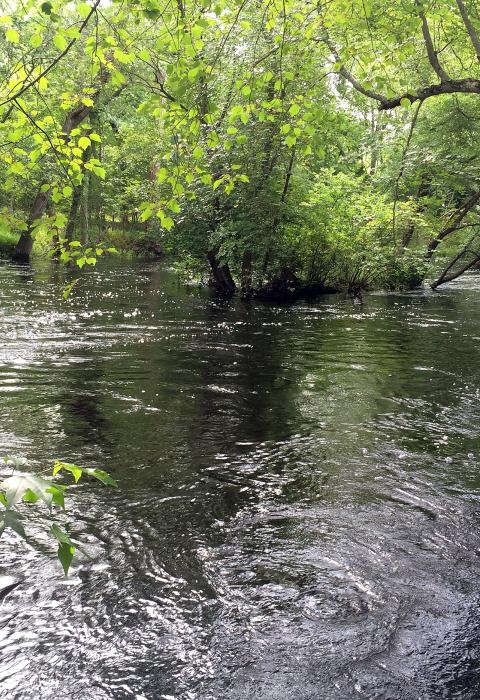Great Egg Harbor River
New Jersey
In 1992, 129 miles of the Great Egg Harbor River and its tributaries were designated into the National Wild and Scenic Rivers System. The Great Egg, as it is known locally, drains 304 square miles of pristine wetlands in the heart of New Jersey's Pinelands Reserve (the famous "Pine Barrens") on its way to the Atlantic Ocean. The Great Egg flows through 12 New Jersey municipalities and is located near the urban centers of Philadelphia, Pennsylvania; Trenton and Camden, New Jersey; and Wilmington, Delaware. The river's proximity to millions of people, together with it being the largest canoeing river in the Pine Barrens, makes the Great Egg an important recreation destination.
Designated Reach
October 27, 1992. From the mouth of Patcong Creek to the Mill Street Bridge. From Lake Lenape to the Atlantic City Expressway. From the Williamstown-New Freedom Road to the Pennsylvania Railroad right-of-way. The following tributaries from their confluence with the Great Egg Harbor River: Squankum Branch to Malaga Road; Big Bridge Branch to its headwaters; Penny Pot Stream Branch to 14th Street; Deep Run to Pancoast Mill Road; Mare Run to Weymouth Avenue; Babcock Creek to its headwaters; Gravelly Run to the Pennsylvania Railroad right-of-way; Miry Run to Asbury Road; South River to Main Avenue; Stephen Creek to New Jersey Route 50; Gibson Creek to First Avenue; English Creek to Zion Road; Lakes Creek to the dam; Middle River to the levee; Patcong Creek to the Garden State Parkway; Tuckahoe River to the Route 49 Bridge; Cedar Swamp Creek from its confluence with the Tuckahoe River to its headwaters.
Outstandingly Remarkable Values
Culture
The watershed has been occupied since pre-historic times, lived upon traditionally by the Lenape Indians before European occupation in the early 1700s.
History
The lands contained all the necessary materials for shipbuilding, and in the Revolutionary War its "bog iron" made cannon balls, while its hidden coves sheltered privateers. Blast furnaces, sawmills, glass factories, and brick and tile works followed until the Industrial Revolution drew its people away. Today, the development of the area's prime agricultural land has contributed greatly to the cultural diversity of the area.
Fish
The lower tidal portions of the Great Egg Harbor River (below Mays Landing) and its tributaries serve as critical nursery habitat and spawning grounds for anadromous fish. Each year, striped bass and alewife herring return from the ocean to spawn in the gravel-bottomed tributaries of the Great Egg Harbor River. The lower Great Egg is also one of only four areas in the state of New Jersey where commercially important quantities of seed oyster still exist.
Recreation
The Great Egg is the longest canoeable river in the New Jersey Pinelands. The Great Egg Harbor River provide opportunities for boating, fishing, hunting, and birdwatching. The area provides excellent recreational opportunities in close proximity to the major urban centers of Philadelphia, Trenton, Camden, and Wilmington.
Scenery
Dissolved iron and tannin, a product of fallen leaves and cedar roots, produce the river's tea-colored "cedar water" along much of its length. The river contains an abundance of undisturbed forest, including cedar and hardwood swamps.
Wildlife
Freshwater and tidal wetlands, amid undisturbed forests, serve as resting, feeding, and breeding areas for waterfowl throughout the year. The lower Great Egg Harbor River and its tributaries provide breeding habitat for the peregrine falcon as well as wintering habitat for the southern bald eagle. Hardwood swamps and wetlands adjacent to the lower, middle, and upper Great Egg and its tributaries provide habitat for rare and endangered species such as the northern harrier and Pine Barrens tree frog.

